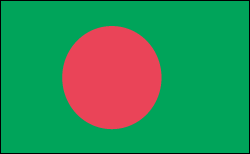- / Countries of the World
- / history
Bangladesh History

Index
The Formation of an Independent Bangladesh
Tension between East and West Pakistan existed from the outset because of their vast geographic, economic, and cultural differences. East Pakistan's Awami League, a political party founded by the Bengali nationalist Sheik Mujibur Rahman in 1949, sought independence from West Pakistan. Although 56% of the population resided in East Pakistan, the West held the lion's share of political and economic power. In 1970, East Pakistanis secured a majority of the seats in the national assembly. President Yahya Khan postponed the opening of the national assembly in an attempt to circumvent East Pakistan's demand for greater autonomy. As a consequence, East Pakistan seceded and the independent state of Bangladesh, or Bengali nation, was proclaimed on March 26, 1971. Civil war broke out, and with the help of Indian troops in the last few weeks of the war, East Pakistan defeated West Pakistan on Dec. 16, 1971. An estimated one million Bengalis were killed in the fighting or later slaughtered. Ten million more took refuge in India. In Feb. 1974, Pakistan agreed to recognize the independent state of Bangladesh.
Founding president Sheikh Mujibur was assassinated in 1975, as was the next president, Zia ur-Rahman. On March 24, 1982, Gen. Hossain Mohammad Ershad, army chief of staff, took control in a bloodless coup but was forced to resign on Dec. 6, 1990, amid violent protests and numerous allegations of corruption. A succession of prime ministers governed in the 1990s, including Khaleda Zia, wife of the assassinated president Zia ur-Rahman, and Sheikh Hasina Wazed, the daughter of Sheik Mujibur.
Prime Minister Sheikh Hasina completed her five-year term as prime minister in July 2000—the first leader to do so since the country gained independence from Pakistan in 1974. In Oct. 2001 elections, Khaleda Zia again won the prime ministership.
